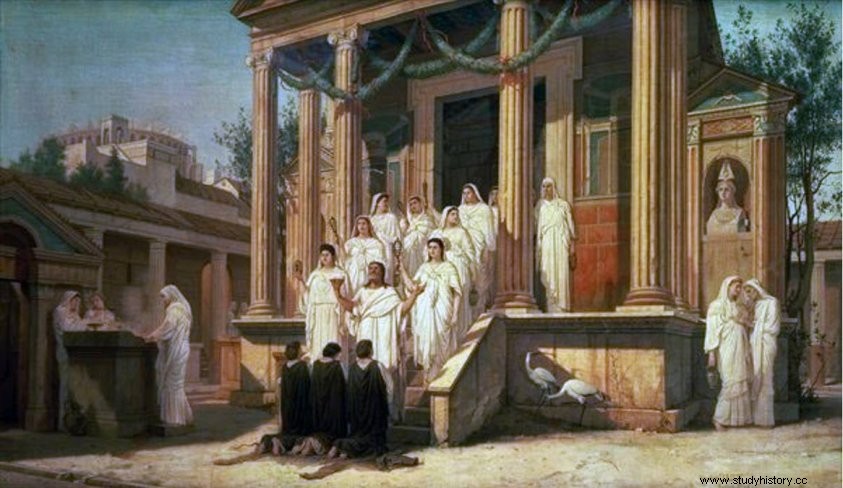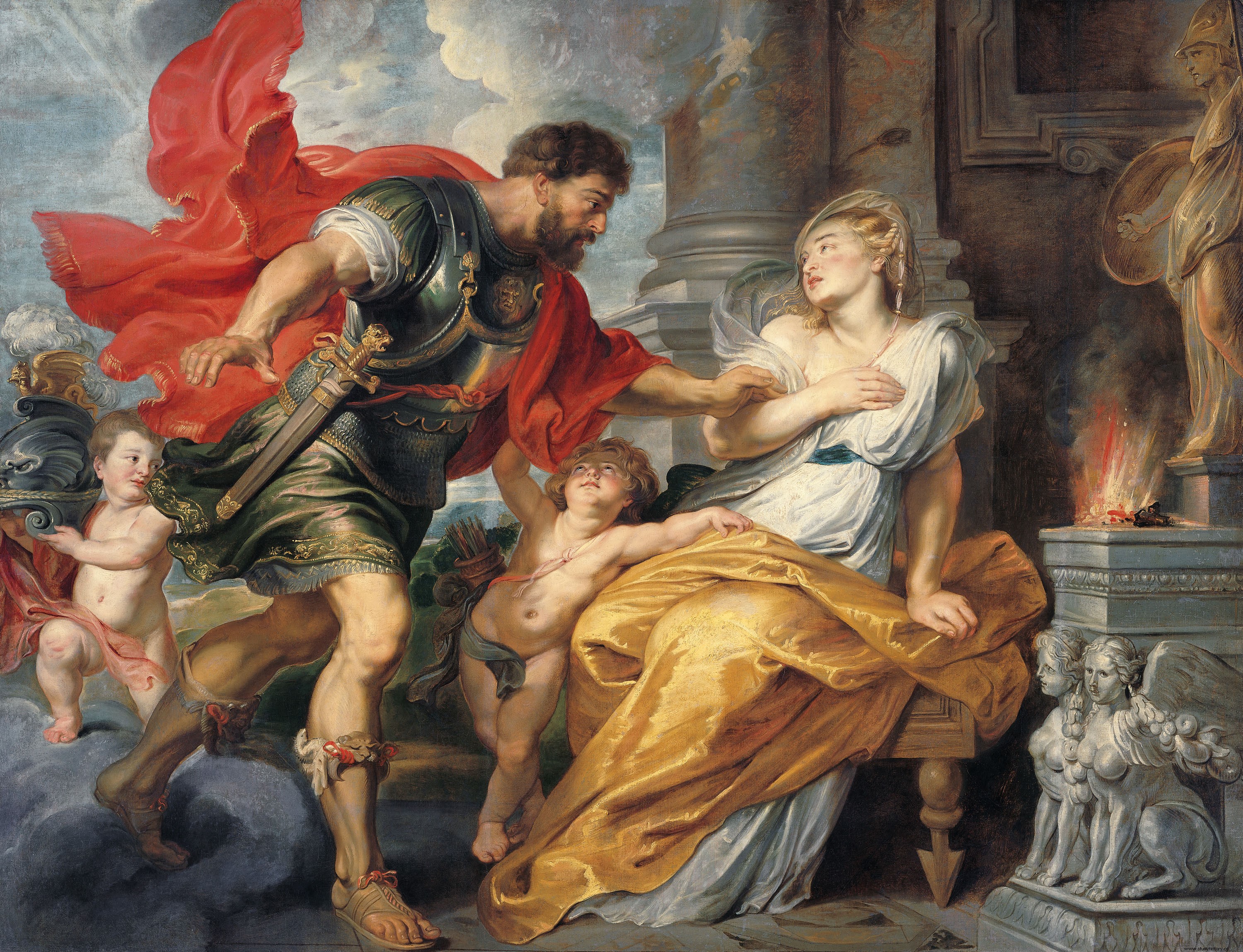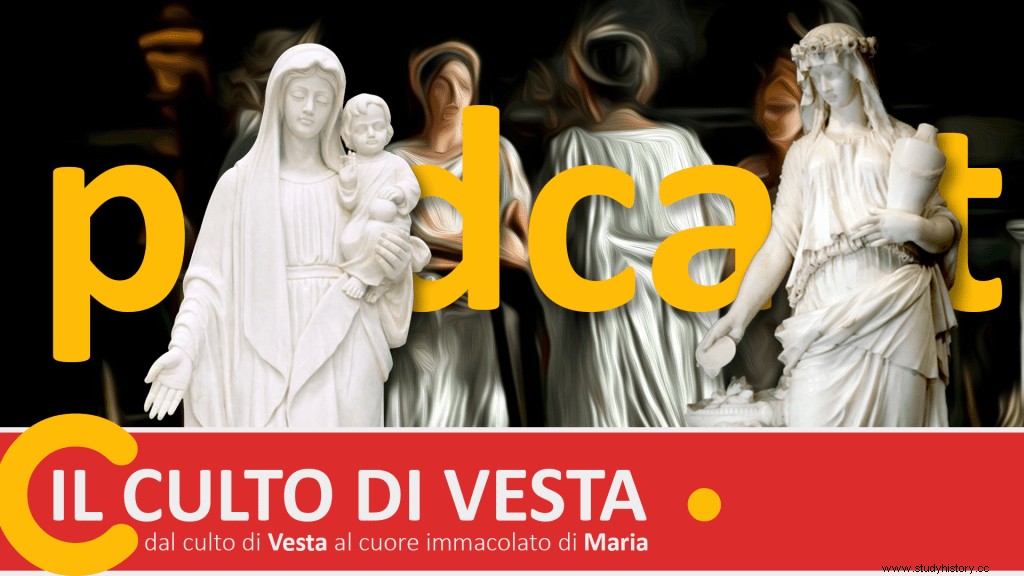
The cult of Vesta is one of the oldest in Rome, which even precedes the birth of Rome, and is linked to one of the myths of the origin of the city.
According to tradition, Rea Silvia , mother of Romulus, was a vestal priestess of Albalonga and, according to Tito Livio , the Roman cult of the goddess Vesta, established by king Numa , derives directly from the cult of Albalonga.
Let us overlook the fact that the priestesses of Vesta were considered "sacred virgins" and the fact that one of these virgins gave birth to two children is quite anomalous for a virgin, but on the mythological level it is a recurring element (remember that Catholicism also tells of a child born of a virgin).
For the sake of completeness, according to the Roman cult of the goddess Vesta, priestesses who lost their virginity or let the goddess' sacred fire go out, were whipped, dressed in funeral clothes and carried in a closed litter, like a corpse, were led to Campus Sceleratus, at the Porta Collina del Quirinale (within the walls) and there, they were practically buried alive. They were made to enter a sepulcher, supplied with bread, water, oil and milk, from which, however, the women could not go out, also because the entrance was walled up.
For a level playing field, the accomplice of the incestus, or the man who had accompanied the priestess, instead suffered the penalty of slaves or flogging to death.
The curious thing is that this same penalty was reserved, according to the cult of Albalonga, to the Vestals, and therefore, in theory, it is the penalty that would have been due to Rhea Silvia, the mother of Romulus, if she had not managed to escape and if not had entrusted her children to the Lupa, but that's another story.

Returning instead to the Roman vestals.
The really interesting thing about this cult is that it has been echoed in all "rebirths" of Rome.
Rome is a particular city, which has far too many myths of its origins, but also numerous rebirths.
The first Rome is a monarchy, the second Rome a republic and the third Rome an empire, and every time Rome is reborn and reorganized, it has brought with it a piece of the previous world, and a new mythology of the origins and, almost by chance, each time the origins of the new Rome are linked to the cult of Vesta.
Let me explain better, according to one of the myths of the foundation, Romulus was the son of a priestess of Vesta, when the kings of Rome were expelled and Rome became a Republic, those who chased the Tarquins from Rome and gave rise to the Republic, were devoted to the goddess Vesta, goddess who, for a long time, was protector of the republic and of the Roman electors, to the point that, some coins of the first century, still depicted on one side a priestess of Vesta and on the other, a Roman elector in the act of vote. And if two episodes may seem like a coincidence, with the birth of the Empire, the coincidences become three, and they begin to be suspicious.
That's right, the cult of the goddess Vesta is taken up again in the mythology of the story of the origins, even with the birth of the empire. According to tradition, in fact, the Emperor Augustus, a few months before his death, drew up his will, along with two other scrolls and delivered them sealed to the priestesses of Vesta.
It may seem like something marginal, were it not that those two scrolls were the "Res gestae divi Augusti" practically the autobiography of Octavian Augustus and his exploits, and in the third, in his will, Augustus bequeathed his treasure, his lands, his titles and his power to Tiberius, formally starting the long imperial succession, known as the Julius-Claudian dynasty.
The cult of Vesta accompanied the birth of Rome three times, in Roman times, but perhaps it did much more.
As I mentioned, there are many similarities between the figure of Rhea Silvia and the virgin Mary, just as there are many similarities between the perception of sexuality and of woman, in the Christian world (in all its evolutions) especially in the medieval and modern age, and in the Islamic world which, we recall, derives from Christianity, just as Christianity derives from Judaism.
We also remember that the Marian cult , the veneration of the virgin Mary, was born in Constantinople , historically known as “the second Rome”.
This is obviously speculation, but, if we take into account this symbolic link between the Christian cult of the virgin Mary and the Roman cult of the goddess Vesta, then it is easy to observe how Rome saw the return of the myth " renewed "Of Vesta, first with the Byzantine institution of the Marian cult and then, with the assignment of Rome as the privileged seat of Papal power, we remember that, according to tradition, Rome was bequeathed to the church by the Emperor Constantine, and, even if it was later discovered that that legacy is actually a false historical, this passage is very important because it recalls the testament of Augustus, delivered to the priestesses of Vesta.

